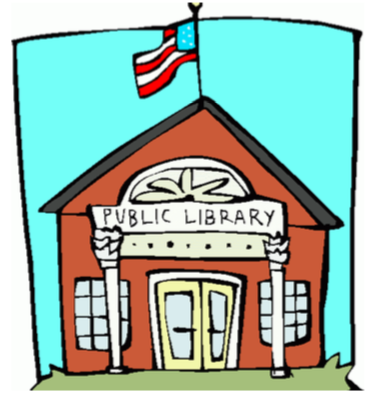Renee B Swartz, Chair of the Monmouth County Library Commission, asked if it would be possible to print this excerpt from a New York Times editorial as an editorial in your newspaper. At a time when the Monmouth County library system is such an integral part of the communities its headquarters, branches and member libraries serve, the article should be of great interest to your readers. Thank you very much, and thanks so much for your continuing support of all Monmouth County Library news.
An excerpt from an editorial which appeared in the New York Times Sept 9, 2018, written by Eric Klinenberg, professor of sociology and director of the Institute for Public Knowledge at New York Uni- versity. The essay is an adaptation from his book, “Palaces for the People: How Social Infrastructure Can Help Fight Inequality, Polarization, and the Decline of Civic Life.
A lot of powerful forces in society seem to think so. In recent years, declines in the circulation of bound books in some parts of the country have led prominent critics to argue that libraries are no longer serving their historical function. Countless elected officials insist that in the 21st century — when so many books are digitized, so much public culture exists online and so often people interact virtually — libraries no longer need the support they once commanded.
But the problem that libraries face today isn’t irrelevance. The real problem that libraries face is that so
many people are using them, and for such a wide variety of purposes, that library systems and their em-
ployees are overwhelmed. According to a 2016 survey conducted by the Pew Research Center, about half of all Americans ages 16 and over used a public library in the past year, and two-thirds say that closing their local branch would have a “major impact on their community.”
Libraries are being disparaged and neglected at precisely the moment when they are most valued and necessary. Why the disconnect? In part it’s because the founding principle of the public library — that all people deserve free, open access to our shared culture and heritage — is out of sync with the market logic that dominates our world. But it’s also because so few influential people understand the expansive role that libraries play in modern communities.
Libraries are an example of what I call “social infrastructure”: the physical spaces and organizations that shape the way people interact. Libraries don’t just provide free access to books and other cultural materials, they also offer things like companionship for older adults, de facto child care for busy par- ents, language instruction for immigrants and welcoming public spaces for the poor, the homeless and young people.
For older people, especially widows, widowers and those who live alone, libraries are places for culture and company, through book clubs, movie nights, sewing circles and classes in art, current events and computing. For many, the library is the main place they interact with people from other generations.
For children and teenagers, libraries help instill an ethic of responsibility, to themselves and to their neighbors, by teaching them what it means to bor- row and take care of something public, and to return it so others can have it too. For new parents, grandparents and caretakers who feel overwhelmed when watching an infant or a toddler by themselves, libraries are a godsend.
In many neighborhoods, particularly those where young people aren’t hyper-scheduled in formal after-school programs, libraries are highly popular among adolescents and teenagers who want to spend time with other people their age. One reason is that they’re open, accessible and free. Another is that the library staff members welcome them; in many branches, they even assign areas for teenagers to be with one another.
To appreciate why this matters, compare the social space of the library with the social space of commercial establishments like Starbucks or McDonald’s. These are valuable parts of the social infrastructure, but not everyone can afford to frequent them, and not all paying customers are welcome to stay for long.
The openness and diversity that flourish in neighborhood libraries were once a hallmark of urban culture. But that has changed. Though American cities are growing more ethnically, racially and culturally diverse, they too often remain divided and unequal, with some neighborhoods cutting themselves off from difference — sometimes intentionally, sometimes just by dint of rising costs — particularly when it comes to race and social class.
Libraries are the kinds of places where people with different backgrounds, passions and interests can take part in a living democratic culture. They are the kinds of places where the public, private and philanthropic sectors can work together to reach for something higher than the bottom line.
We should take heed. Today, as cities and suburbs continue to reinvent themselves, and as cynics claim that government has nothing good to contribute to that process, it’s important that institutions like libraries get the recognition they deserve. It’s worth noting that “liber,” the Latin root of the word “li- brary,” means both “book” and “free.” Libraries stand for and exemplify something that needs defending: the public institutions that — even in an age of atomization, polarization and inequality — serve as the bedrock of civil society.
Is the public library obsolete?
Published on

